Taiwan plays a key role in Washington’s model of deterrence against China, former US secretary of state Mike Pompeo said in a speech in Taipei yesterday.
During US president-elect Donald Trump’s first term, “we had developed what we believe was a pretty effective model of deterrence against adversaries who wanted to undermine the set of rules and values that the people of Taiwan and the people of the US hold dear,” Pompeo said at a forum organized by the Formosa Republican Association.
“Succeeding in continuing to build this model will not solely rest at the feet of president Trump and his team, but it will be shared with Taiwan; you will be crucial in this effort. Free nations, especially those in this Indo-Pacific area, must send an unambiguous message to Beijing that Taiwan is free and independent and is going to stay that way... It is imperative that we speak with that clarity. Chinese President Xi Jinping [習近平] will not determine the future of Asia or of Taiwan, we will. We’ll do it alongside Japan, Australia, Vietnam, the Philippines, Indonesia and India,” he said.
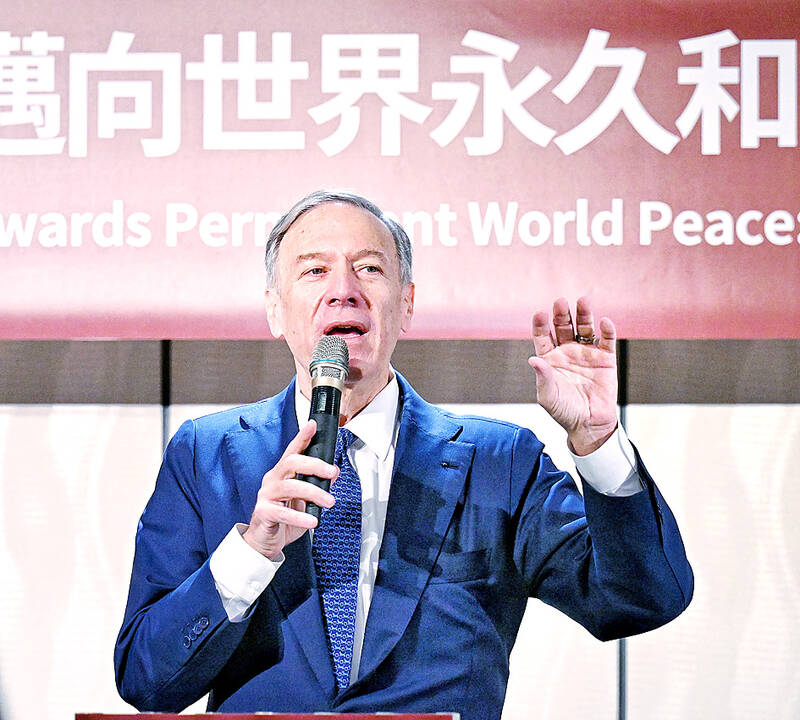
Photo: Fang Pin-chao, Taipei Times
Pompeo, who was on his fourth visit to Taiwan since 2022, reiterated his view that the US should end its policy of “strategic ambiguity” in its relations with Taiwan, as it misleads the international community and increases aggression in the Asia-Pacific region.
During the forum, participants sought Pompeo’s input on what Trump would do in his second term, particularly with regard to US relations with China.
Asked if Trump would let Ukraine fall amid Russia’s invasion and rearrange his administration’s strategic priority to China, Pompeo said the US would continue to do the things that are necessary to deter Moscow.
“Trump would command a place for US leadership in Europe, in which he would convince Europeans to be more serious about their security and defense after 25 or 30 years of complacency,” he said, adding that he would remind Russian President Vladmir Putin of the cost of continued aggression.
As China posed a real-time substantive risk to the US during Trump’s first term, Pompeo said that he was “near certain” that the second Trump administration would develop a similar approach to then.
“In terms of mindset and how the president would approach it, he’s determined to get them to stop killing Americans with fentanyl, to build [a] strong military deterrent, and those are focused fundamentally on the risk from Xi Jinping and his CCP” (Chinese Communist Party), he said.
The rule of reciprocity would guide the direction of US-China relations in Trump’s second term, Pompeo said.
“The idea of reciprocity would be the central feature as you all think about how the US will deal with the broader set of issues. We will treat the CCP the same way they choose to treat us and you. We’re going to demand that they engage in the world stage on a level-playing field with the same set of rules that give everyone the same opportunity to succeed,” he said.
Rather than looking at the contradiction of what Trump said on the campaign trail about Taiwan and his nomination of pro-Taiwan officials with nervousness, Pompeo suggested that Taiwan be willing to be forthright and engage with the US.
“The best indication of how Trump thinks about this [US-China relations] is what actions he took when he had the capacity to actually take actions... [People] should not forget there is [the] US Congress that has got its own views and will have a substantial say in many of these policies,” he said.
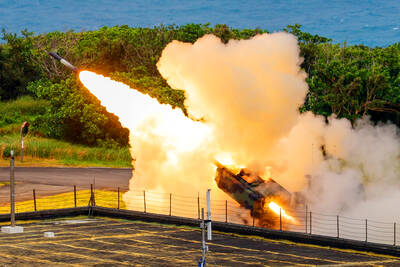
DEFENSE: The first set of three NASAMS that were previously purchased is expected to be delivered by the end of this year and deployed near the capital, sources said Taiwan plans to procure 28 more sets of M-142 High Mobility Artillery Rocket Systems (HIMARS), as well as nine additional sets of National Advanced Surface-to-Air Missile Systems (NASAMS), military sources said yesterday. Taiwan had previously purchased 29 HIMARS launchers from the US and received the first 11 last year. Once the planned purchases are completed and delivered, Taiwan would have 57 sets of HIMARS. The army has also increased the number of MGM-140 Army Tactical Missile Systems (ATACMS) purchased from 64 to 84, the sources added. Each HIMARS launch pod can carry six Guided Multiple Launch Rocket Systems, capable of
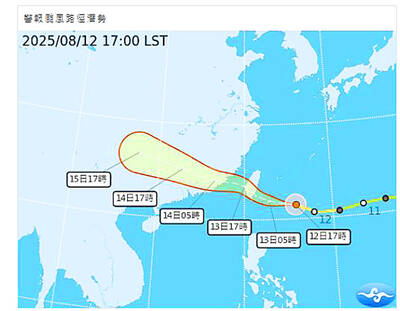
GET TO SAFETY: Authorities were scrambling to evacuate nearly 700 people in Hualien County to prepare for overflow from a natural dam formed by a previous typhoon Typhoon Podul yesterday intensified and accelerated as it neared Taiwan, with the impact expected to be felt overnight, the Central Weather Administration (CWA) said, while the Directorate-General of Personnel Administration announced that schools and government offices in most areas of southern and eastern Taiwan would be closed today. The affected regions are Tainan, Kaohsiung and Chiayi City, and Yunlin, Chiayi, Pingtung, Hualien and Taitung counties, as well as the outlying Penghu County. As of 10pm last night, the storm was about 370km east-southeast of Taitung County, moving west-northwest at 27kph, CWA data showed. With a radius of 120km, Podul is carrying maximum sustained
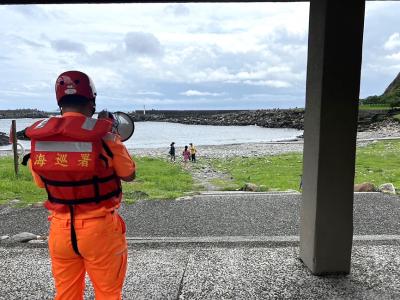
Tropical Storm Podul strengthened into a typhoon at 8pm yesterday, the Central Weather Administration (CWA) said, with a sea warning to be issued late last night or early this morning. As of 8pm, the typhoon was 1,020km east of Oluanpi (鵝鑾鼻), Taiwan’s southernmost tip, moving west at 23kph. The storm carried maximum sustained winds of 119kph and gusts reaching 155kph, the CWA said. Based on the tropical storm’s trajectory, a land warning could be issued any time from midday today, it added. CWA forecaster Chang Chun-yao (張竣堯) said Podul is a fast-moving storm that is forecast to bring its heaviest rainfall and strongest
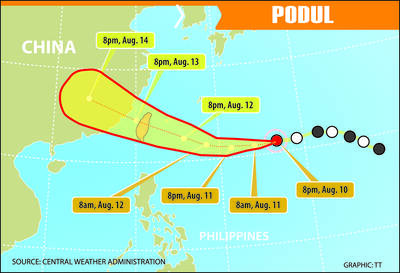
TRAJECTORY: The severe tropical storm is predicted to be closest to Taiwan on Wednesday and Thursday, and would influence the nation to varying degrees, a forecaster said The Central Weather Administration (CWA) yesterday said it would likely issue a sea warning for Tropical Storm Podul tomorrow morning and a land warning that evening at the earliest. CWA forecaster Lin Ting-yi (林定宜) said the severe tropical storm is predicted to be closest to Taiwan on Wednesday and Thursday. As of 2pm yesterday, the storm was moving west at 21kph and packing sustained winds of 108kph and gusts of up to 136.8kph, the CWA said. Lin said that the tropical storm was about 1,710km east of Oluanpi (鵝鑾鼻), Taiwan’s southernmost tip, with two possible trajectories over the next one